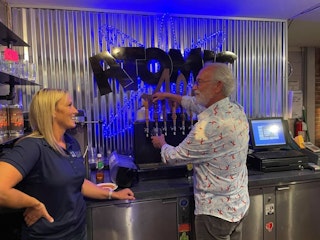An Island Between War Work and Riverside Recreation
Isla Clover
During World War II and the postwar decades, Clover Island evolved from submerged sandbar to strategic Port property. It played a small but meaningful role in supporting regional transportation and workforce life along the Columbia River.
Where a Growing City Balanced Industry and Leisure
In 1941, the Port of Kennewick acquired part of Clover Island to support wartime river operations. The island hosted barge-building sites and tugboat construction, including the powerful Winquatt in 1944, boosting its role as a working shoreline for wartime commerce.
In 1953, the island was expanded and connected to the mainland by a causeway, transforming into a sixteen-acre waterfront hub. Over time, it became a place for both work and leisure.
Today, Clover Island is a vibrant destination. Visitors can relax at waterfront restaurants, walk the scenic riverfront, and admire the Clover Island Lighthouse, a 62-foot concrete beacon built in 2010, the first new U.S. lighthouse since 1962.
































